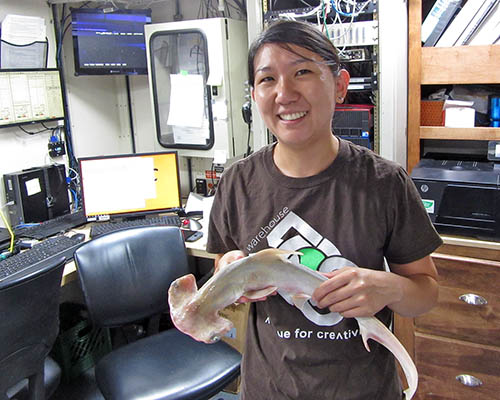
PSC professor completes internship on Gulf of Mexico research vessel
Prairie State College biology professor Angela Hung shows off a baby hammerhead shark. (Provided photos) There’s no doubt being an intern on a ship in the Gulf of Mexico in the heat of summer counting and weighing fish w
